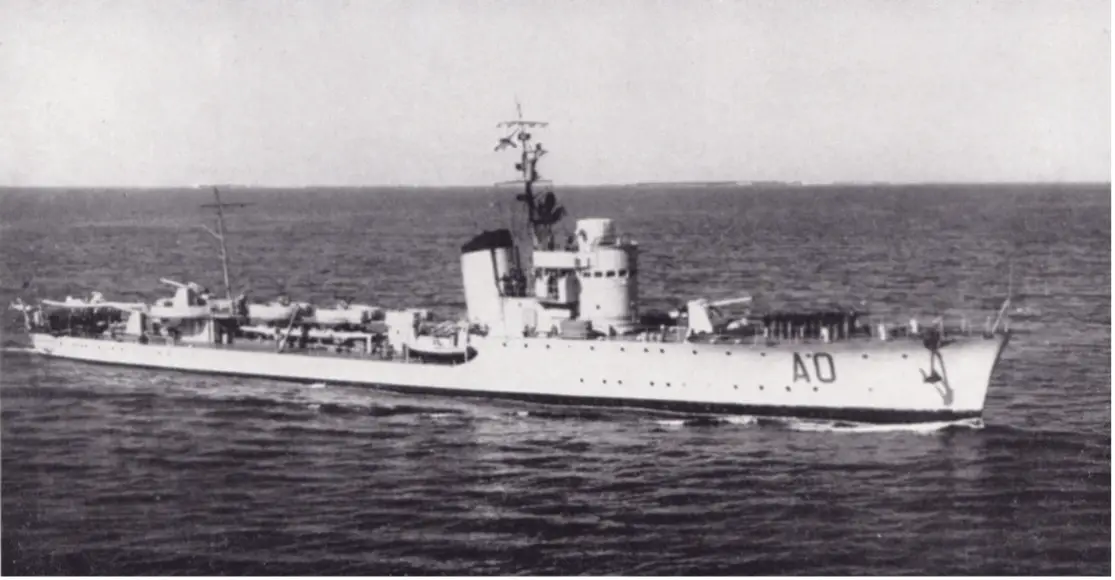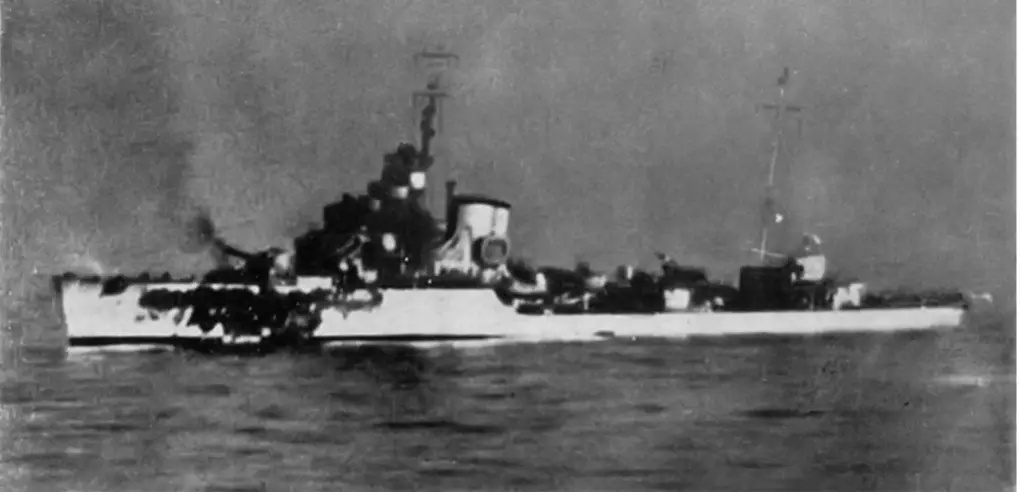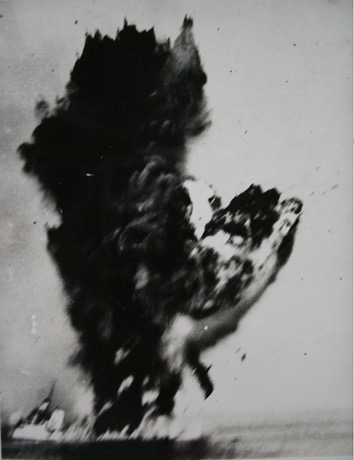Context
On the 8th of October 1940, a convoy consisting of four merchant ships left Alexandria, bound for Malta. The convoy had a very powerful escort, made up of four battleships, two aircraft carriers, six cruisers and sixteen destroyers. The reason for such a powerful escort was that at the end of September, the Mediterranean fleet had escorted another small convoy bound for Malta and sighted the Italian fleet (with five battleships) at just 100 nautical miles. There was no contact between the two formations but certainly, the strong Italian naval presence at sea led the British to reinforce the convoy escort.
The convoy safely reached Malta on the 11th of October and, at 22:30, the ships left the island, free of their cargo. The bulk of the Mediterranean fleet awaited south of Malta while the cruisers patrolled the area to the Nort-East. HMS Ajax was the extreme ship of the patrolling screen
The Italians were aware of the British presence at sea, this time they had dispatched only light, torpedo-armed vessels to disturb the enemy operation, while two cruisers were ready to intervene from Palermo.
The clash
On the night of the 12th of October, the Italian 1° torpedo boat flotilla (Alcione, Airone, Ariel), together with the 11° destroyer flotilla (Artigliere, Aviere, Camicia Nera, Geniere) were proceeding westwards on parallel courses, covering an area of approximately 32 nautical miles, in search of enemy ships.
At 01:37 AM, the torpedo boat Alcione sighted the HMS Ajax, the moon shined the British cruiser and thus favoured the three Italian torpedo boats which were cruising straight towards the Ajax. The destroyers, cruising more to the south, remained unaware of the enemy’s presence.
In the following minutes, also the Ariel and the Airone sighted the Ajax and adjusted course to launch their torpedoes.
The Alcione launched two torpedoes at 01:57, imitated immediately by the Airone, which launched 4 torpedoes. One minute later, the Ariel launched one torpedo. The estimated distances were between 1800 and 2000 meters.

HMS Ajax
HMS Ajax sighted the Italians around 01:55 and faced the Airone approaching on an opposite course, practically right ahead. The Alcione closed in from the left while the Ariel came from the right. The Airone turned south, cutting the way to the Ajax and fired with its 100mm guns that scored a couple of hits on the Ajax. Around 02:00 AM, the Ajax returned fire, targetting the Ariel (to the right) with its main guns and the Airone (ahead to the left) with the secondary armament. The Ariel received several hits and sunk in the space of a few minutes.
The Ajax then turned to the left and invested the Airone with its full broadside, crippling the ship. Flames raged on while the crew started to abandon the slowly sinking ship. Meanwhile, Alcione had escaped to the north and was about to return to the area.

Torpedo boat Airone
When the fight erupted between the Ajax and the torpedo boats, the Italian destroyers changed course, steaming to the north in succession. The Aviere and Geniere were the first to make contact with the Ajax, which now steamed south after having neutralized Airone and Airel. The Geniere fired some shots at the Ajax that missed, and then it lost contact and withdrew. The Aviere sighted the Ajax at 02:10 and fired some shots. The Ajax returned fire and hit the Aviere that turned eastward and withdrew.
Then came the Artigliere, that could not find the enemy ship in the darkness and with the moon behind it. Around 02:30 152mm salvos from the Ajax landed near the Italian destroyer, which launched a torpedo in response. However, several hits landed on the Artigliere, damaging the engine compartment and the command tower, killing the Commander (C.V. Carlo Margottini).
At 02:47, with Artigliere in flames, the Ajax turned eastwards. There was a brief exchange of fire with the Camicia Nera, the southernmost destroyer but with no results.
Aftermath
The fight had ended, and the torpedo boat Alcione returned to the scene and rescued sailors from the Ariel and the Airone while the Camicia Nera sailed towards the Artigliere still afloat.

The Artigliere heavily damaged after the battle
Sailors on the Artigliere managed to extinguish the fire and put back in action one boiler, so the ship managed to steam northwards at low speed. At 04:00 AM the boiler broke down and the Camicia Nera began to tow the crippled Artigliere.
At 07:00 AM, British reconnaissance aircraft sighted the two ships and at 08:40 enemy ships were sighted to the south. These were the cruisers HMS York, Glouchester and Liverpool. The Camicia Nera was forced to abandon the towing and abandoned the Artigliere.
The crippled destroyer signalled that it was about to sink, the crew soon abandoned the ship and the British finished off the Artigliere with one torpedo.
During the fight, the Italians lost 325 men, while 225 were rescued at sea, also thanks to a message sent on clear frequencies by the British, signalling the coordinates of the area where the survivors were located.

The explosion of the torpedo that hit the Artigliere
Sources
Fioravanzo, G. (1959). La Marina Italiana nella seconda guerra mondiale, Volume II La Guerra nel Mediterraneo: le azioni navali (Tomo 1). Roma: USMM.
O’Hara, V. P. (2008). Struggle for the Middle Sea: The Great Navies at War in the Mediterranean Theater, 1940-1945.
Stille, M. (2021). Italian destroyers of WW2.